Lisbon guide 
Lisbon will enchant you with its pastel-colored houses, historic trams and stunning panoramas of the Tagus River. Stroll through the narrow streets of Alfama, admire the majestic Belém Tower or taste the legendary pastéis de nata. History breathes on every corner – from the Phoenicians to the Golden Age of Discovery to the modern era. The city survived a devastating earthquake in 1755 and rose again like a phoenix thanks to innovative planning. Today, Lisbon is a vibrant center of culture and gastronomy, where you can immerse yourself in the melancholic tones of fado or enjoy fresh seafood at the Time Out Market. One of the most beautiful cities in Europe is waiting for you to visit! :)
Monuments and culture - In this article you will learn more about famous monuments such as Torre de Belém, Vasco da Gama Bridge, Oceanarium and others.
Accommodation - We recommend accommodation both for lovers of camping and living on a boat, as well as for fans of luxury accommodation with a spa and swimming pool.
Food and drink - In Lisbon, you can enjoy not only excellent fish and seafood, but also great sweet desserts.
Practical advice - Here you will learn what the Lisbon Riviera is, where tram number 28 goes, where to shop or party ...
Famous people - Which famous explorers and navigators, poets or even footballers lived in Lisbon?
Weather - When do you enjoy the best weather in Lisbon? What about the water temperature?

Lisbon is the capital of Portugal and one of the most beautiful cities in Europe. It is located on the west coast of Portugal, at the mouth of the Tagus River. Approximately 500,000 people live in this largest city in Portugal.
Lisbon is famous for its hills, trams and narrow streets with cobblestone pavements. You can visit many historical buildings and monuments here, such as Mosteiro dos Jerónimos, Torre de Belém or Castelo de São Jorge.

Lisbon also has a rich cultural scene, with an abundance of museums, galleries and art festivals. Among the most famous cultural events is the Festa de São João, which takes place in June.
In Lisbon, you can relax in various parks and gardens. Among the most beautiful is the Jardim da Estrela, a garden with a botanical section and extensive lawns.
Lovers of fresh fish and seafood will definitely find something to their taste here. The most typical dishes include bacalhau (dried salt cod) or grilled octopus. From the sweet dishes, be sure to try the pastel de nata, a traditional Portuguese sweet cake with vanilla cream filling.
From there, you can take trips to nearby tourist-attractive cities such as Sintra, Cascais or Porto. Lisbon has its own airport and many shipping ports, allowing easy access to other beautiful places in the country.
Lisbon's rich history is reflected in its architecture, culture and way of life. The city has developed over the centuries under the influence of various cultures, including Roman, Moorish and Christian, all of which can be seen in its cultural monuments and traditions...
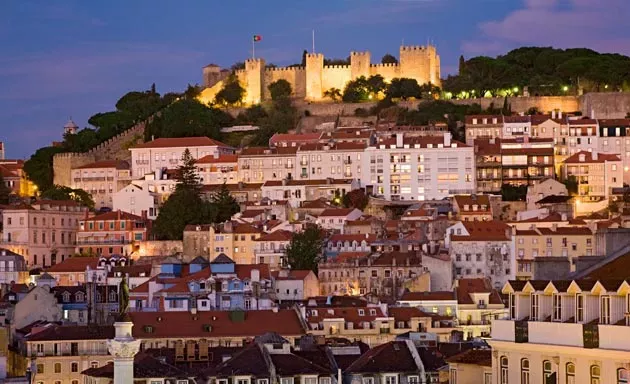
Monuments and culture
Vasco da Gama Bridge - The longest bridge in the European Union, spanning the Tagus River, is over 12 kilometers long. It was opened in 1998 to celebrate the 500th anniversary of Vasco da Gama's discovery of a sea route to India. The construction of the bridge significantly relieved traffic in Lisbon, connecting the northern and southern parts of Portugal without having to pass through the capital.
Address: Parque das Nações, Lisbon.
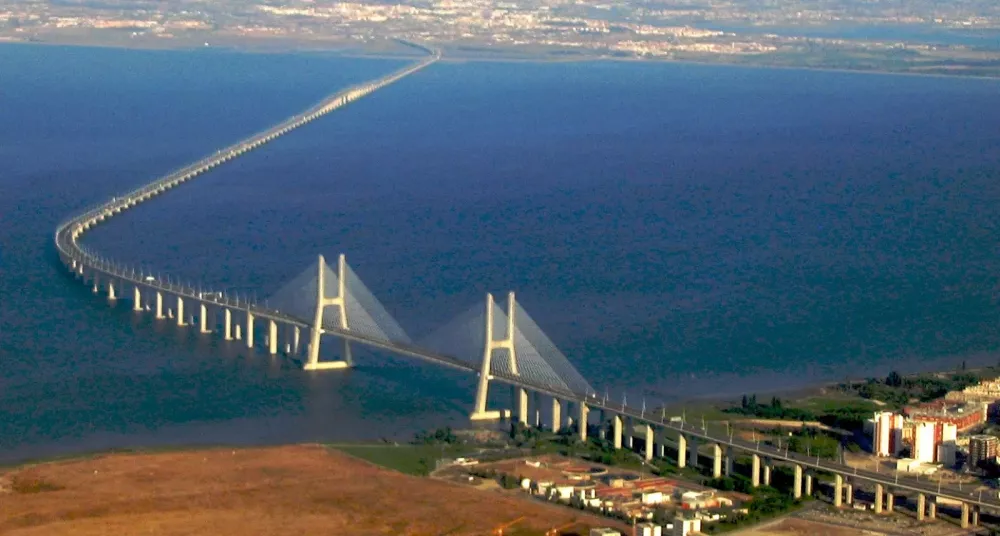
Mosteiro dos Jerónimos - The Monastery of the Order of St. Jerome, built in the early 16th century near the Tagus River. It is one of the most important architectural works of the Manueline style (Portuguese late Gothic). Kings and queens are buried here and Vasco da Gama and the famous Portuguese poet Luís de Camões also have tombstones here. The monastery has been on the UNESCO World Heritage List since 1983 and was also elected one of the Seven Wonders of Portugal.
Address: Praça do Império, Lisbon.

Torre de Belém - The ancient fortified tower was originally used to defend the city. Its use changed over the centuries, including as a prison and a customs house. It was completed in 1520. Like the Monastery of St. Jerome, it is considered a masterpiece of the Manueline style. The tower originally stood on an island, but due to silt deposits it is now connected to the mainland. Torre de Belém has been a UNESCO World Heritage Site since 1983.
Address: Av. Brasília, Lisbon.
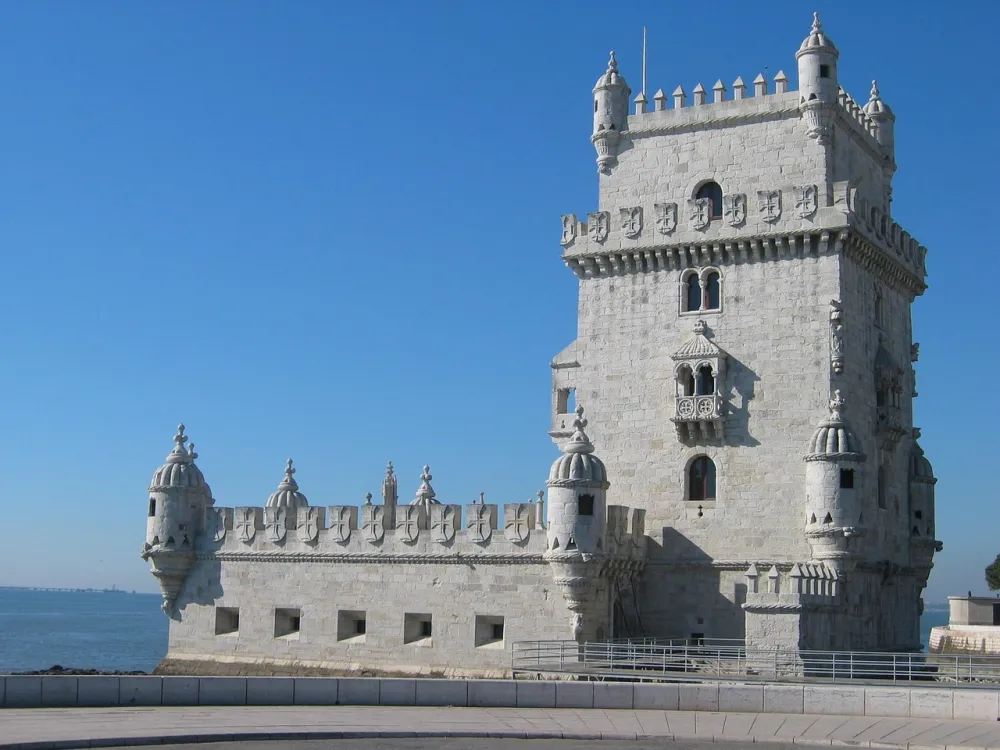
Monument to the Discoverers – The monument was built in 1960 to commemorate the 500th anniversary of the death of Henry the Navigator, who stands at the head of a sculptural group on the prow of a stylized ship. The monument also features other famous figures from Portuguese history, such as Vasco da Gama and the poet Luís de Camões. The monument is shaped like a caravel, a traditional Portuguese ship, and is over 50 meters high. It is located at the mouth of the Tagus River in the Belém district, not far from the Monastery of St. Jerome or the famous Torre de Belém.
Address: Av. Brasília, Lisbon.
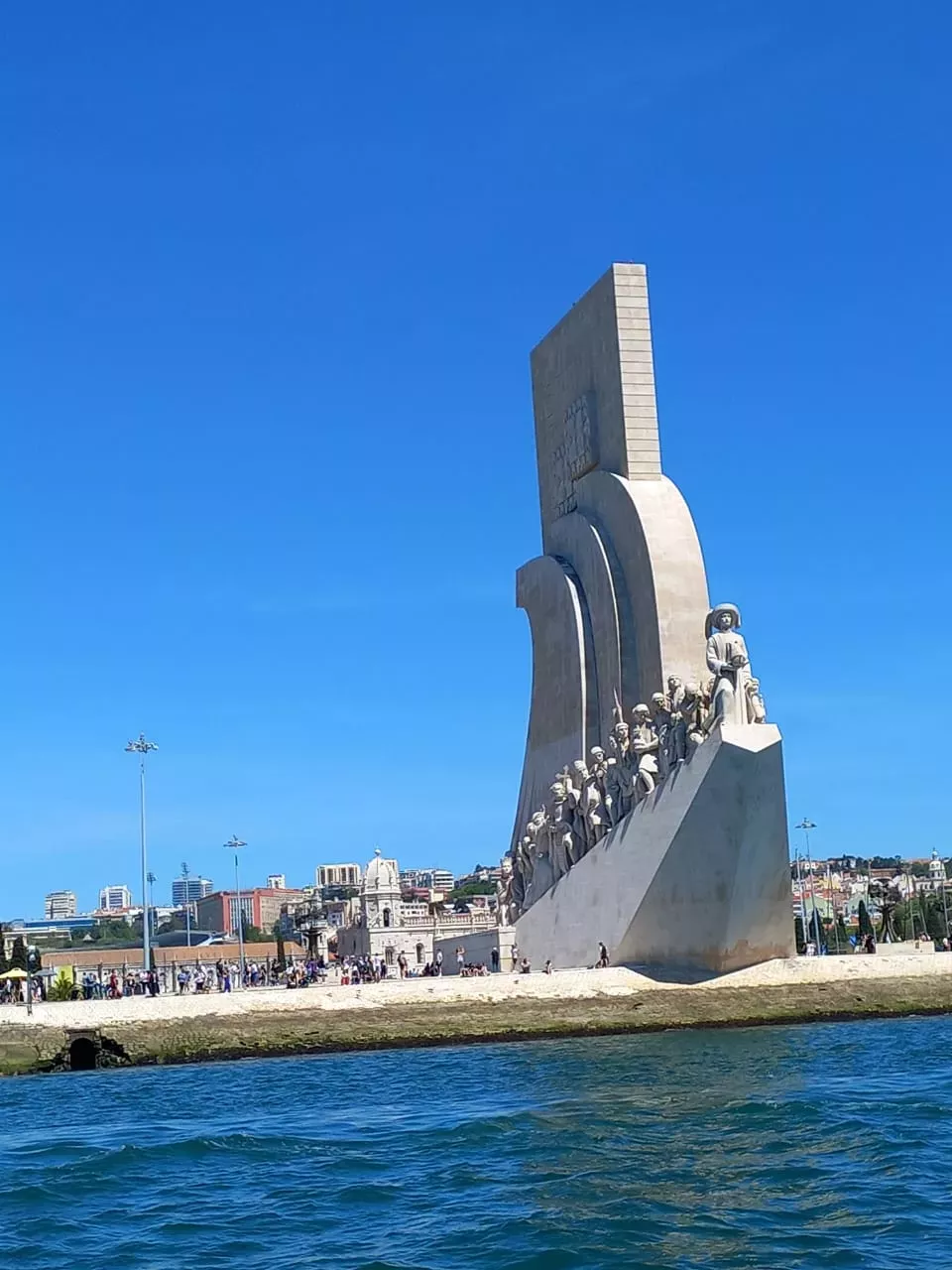
Sé Cathedral – The main Roman Catholic church in Lisbon. Built in the 12th century, the cathedral is one of the oldest and most important monuments in the city. Previously, a mosque stood on this site. The three-aisled building with a cruciform plan measures 90 meters long and 40 meters wide. The two towers are 12 meters high. The cathedral houses the relic of Saint Vincent, the patron saint of Lisbon.
Address: Largo da Sé, Lisbon.
Castelo de São Jorge (Castle of St. George) – Originally a Moorish fortification, rebuilt in the 12th century as a royal residence. The castle served to defend the city. The castle offers some of the most beautiful panoramic views of the entire city and the Tagus River. The moat is home to peacocks, who have become one of the symbols of the castle.
Address: R. de Santa Cruz do Castelo, Lisbon.
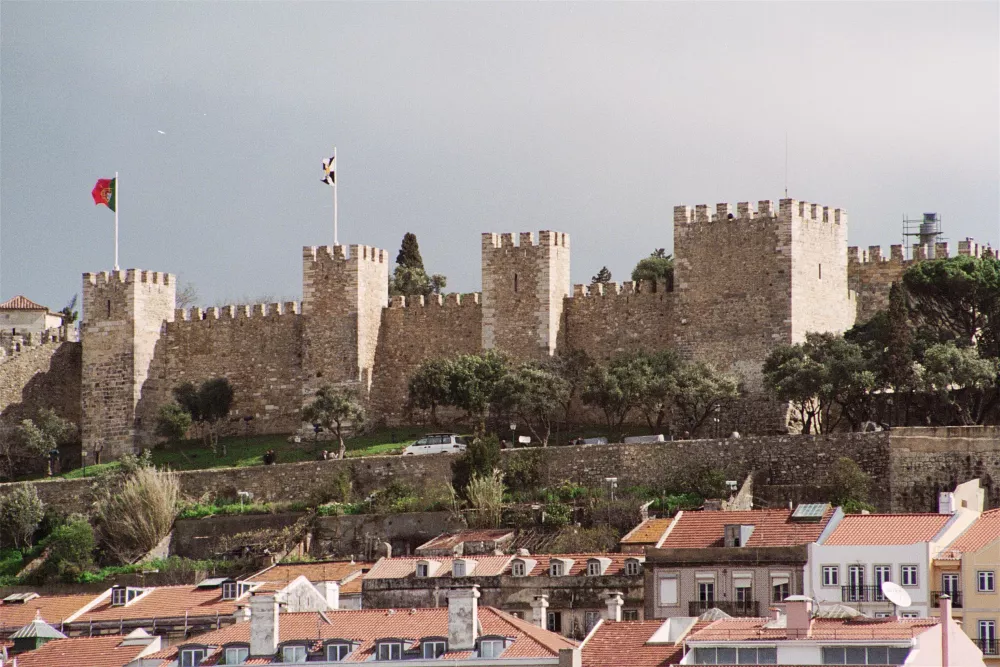
Praça do Comércio - The largest square in the center of Lisbon. It offers a magnificent view of the Tagus River, which borders its southern part. The square is dominated by a bronze equestrian statue of King Joseph I. This part of the city was rebuilt in the second half of the 18th century after a devastating earthquake. In the past, the square was an important commercial center, as its translation from Portuguese suggests.
Address: Praça do Comércio, Lisbon.
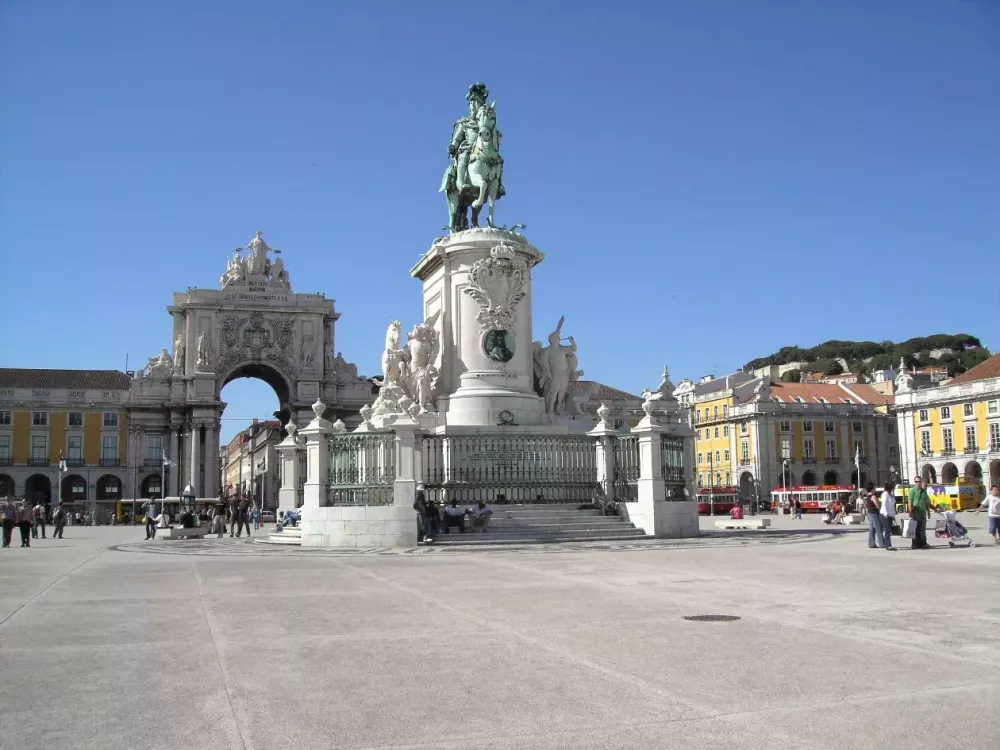
Elevador de Santa Justa - The ancient elevator connects the Baixa district with the Bairro Alto district. It was designed in 1900 by engineer Raul Mesnier de Ponsard, a student of the famous Gustave Eiffel. The construction of the 45-meter-high elevator was completed 2 years later. Originally the elevator was powered by steam, but in 1907 it was converted to electric power. The upper terrace offers a breathtaking view of the city.
Address: R. do Ouro / R. de Santa Justa, Lisbon.
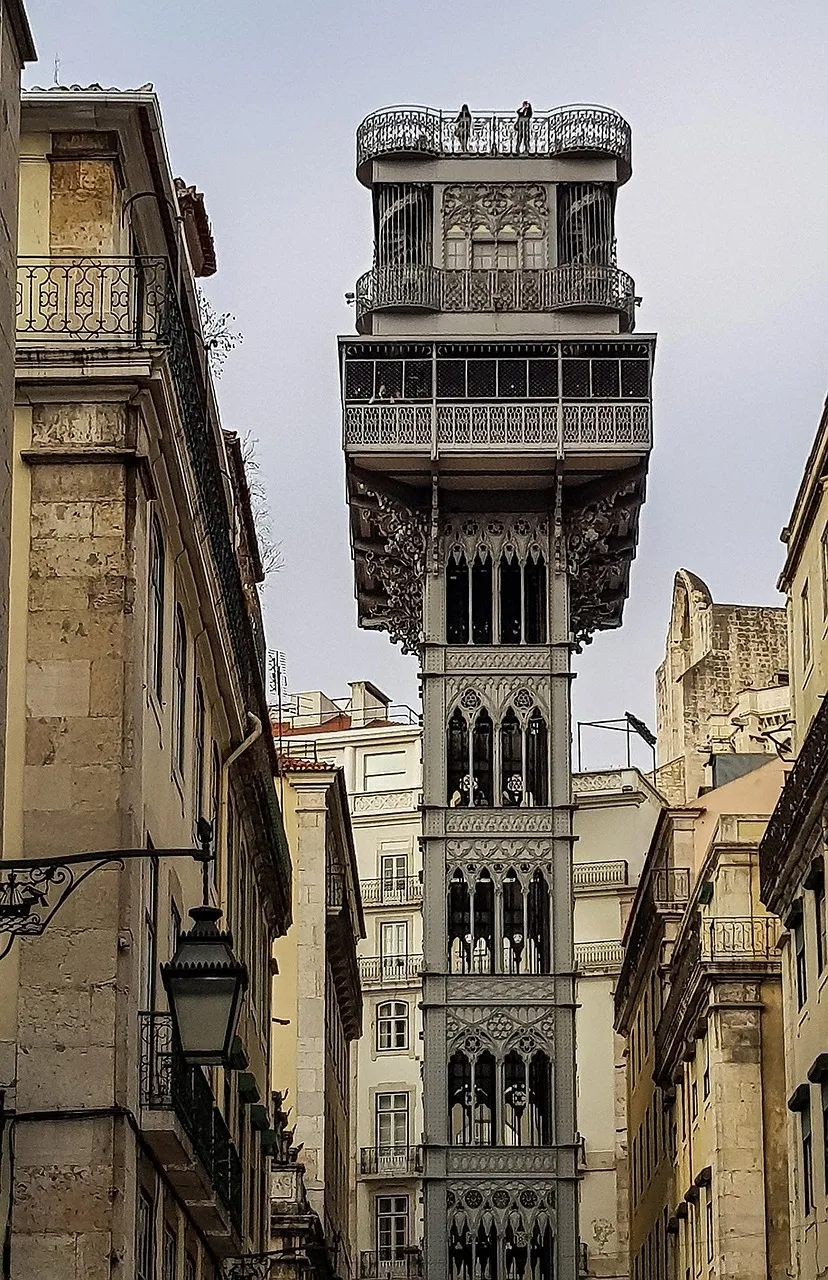
Oceanário de Lisboa - One of the largest aquariums in Europe, it is home to thousands of species of marine life. The main tank allows you to observe the life of four different oceans of the world at the same time - visitors can see sharks, rays, majestic luminous moonfish (the largest bony fish in the world), sea otters, penguins and many other fascinating creatures. The oceanarium is located in the modern Parque das Nações district, which was built for the World Expo in 1998.
Address: Esplanada Dom Carlos I, Lisbon.
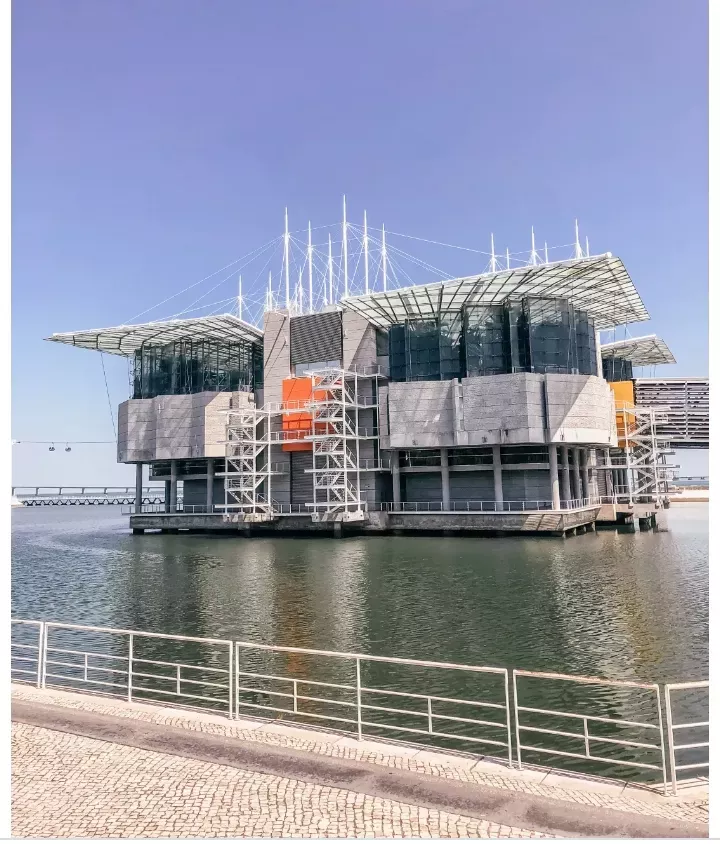
Statue of Christ (Cristo Rei) - The statue of Christ overlooks the city from across the river from the city of Almada. The Portuguese built the statue in the second half of the 20th century, based on the more famous statue of Christ in Rio de Janeiro, as a thank you for sparing their country the horrors of World War II. The pedestal of the statue measures an incredible 82 meters. You can take an elevator to the top and enjoy a stunning view of the city. The statue itself measures 28 meters.
Address: Avenida Cristo Rei, Almada.

Accommodations
When looking for a suitable place to stay, you need to take into account that Lisbon is a relatively hilly city. If you have mobility issues or are traveling with children, for example, it is recommended to stay somewhere close to tram line 28 - it runs through the old town past many important places and monuments and will make your travel much easier. There are enough accommodation options in the city for everyone (almost 5000 in total!) - cheap hostels and guest houses, apartments and hotels from 1-star to luxurious 4- and 5-star.
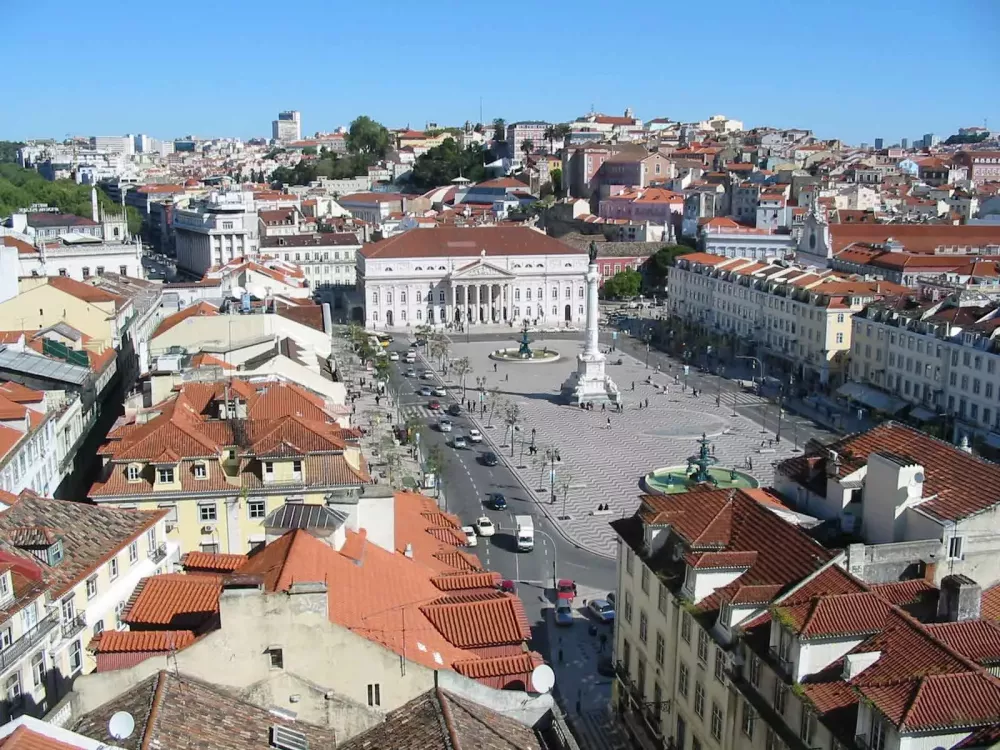
If you are looking for luxury accommodation with a spa, I recommend the Olissippo Lapa Palace - a 5-star hotel from the 19th century set in a subtropical garden on a hill overlooking the Tagus River. In addition to the spa, there are also indoor and outdoor pools.
If you prefer apartments with their own kitchen, the apartment hotel Residentas Arco do Bandeira is located right in the city center, which can also provide you with a transfer from the airport.
Pousada Alfama is a pleasant guesthouse in the city center offering rooms with a balcony and a view of the river.
If you arrive in Lisbon late in the evening, hotels with a reception open 24 hours a day are suitable. For example, the three-star Blue Liberdade Hotel is located right in the center.
For example, Goodmorning Solo Traveller Hostel offers cheap accommodation with shared rooms and bathrooms. Here you can look forward to fresh waffles for breakfast or cocktail evenings.
As Lisbon is located by the river and by the sea, you will also find offers for boat accommodation, for example the Tagus Marina located a short distance from the Lisbon Oceanarium.
Camping lovers will certainly be impressed by Lisboa Bungalows with a swimming pool and a children's playground. You will find it surrounded by greenery, 6 km from the city center.
For a complete offer of accommodation in Lisbon, we recommend using A-HOTEL.com or Booking.com.
Food and drink
When cooking, the Portuguese could choose from a variety of ingredients and spices imported from all over the world. That's why their cuisine is so varied and imaginative. They most often eat fish and seafood here, then pork, poultry, etc. You will most often taste rice or potatoes as a side dish.
The most famous local fish dish is Bacalhau - dried salted cod - in Portugal you can taste it prepared in a hundred different ways - in Lisbon it is most often served with potatoes and vegetables.

Sardinhas Assadas – popular grilled sardines you can buy both in the restaurant and on the street.
Another delicious food is grilled octopus.
Other typical seafood dishes are Arroz de marisco (similar to Spanish paella) or Caldeirada (various types of fish and seafood stewed in vegetable sauce).
Pork meat the use to makes various sausages and hams.
And finally, we'll get to the sweets - the Portuguese are very good at them :) Anyone visiting Lisbon should definitely not miss the Pastel de Belém (pastel de nata) - a puff pastry cupcake with a sweet filling of custard and egg yolks. As the name suggests, it comes from the Lisbon district of Belém.

Another dessert Queijada is made from cottage cheese.
Grapevines are also grown throughout Portugal. Local wines are not only divided into white, rose and red, but you can also order green wine here (young and sour, suitable for summer).
You can learn more about the most famous Portuguese drink, Port wine, in our article about Port.

Ginjinha – a sweet cherry liqueur that is said to come directly from Lisbon or its immediate surroundings.
In Portugal, beer and various brandies (for example, from figs or wine) are also produced and drunk.
Among the most popular soft drinks is coffee - different types of coffee have their own names - for example, Galao (coffee latte) or Pingo (espresso with a little milk).
Chilled Água de coco (coconut water), a refreshing and hydrating drink suitable for children and athletes, will definitely come in handy at the beach.
Practical tips
Like Rome, Lisbon was founded on 7 hills - you can walk around them all and see which one has the best view of the city ;). Prepare comfortable shoes - they will definitely come in handy in the hilly terrain and stony streets.
The yellow tram number 28 runs through the narrow streets of the historic Alfama district and offers an incredible view of the city. This tram has been operating for over 100 years and has become a tourist attraction. The route starts at Martim Moniz Square and ends in the historic Campo Ourique district. During the route, it passes several well-known monuments (São Jorge Castle, Sé Cathedral and Rossio Square). However, tram number 28 is not the only yellow tram in Lisbon. The city has a total of 6 yellow tram lines that run mainly in the city center. All these historic trams still retain their original character.

Lovers of shopping will enjoy the streets of Avenida da Liberdade (predominantly luxury fashion), Chiado and Baixa. The city has several shopping centers and the Feira da Ladra flea market.
If you want to enjoy the nightlife, visit Bairro Alto or Cais do Sodré, where there are many bars and nightclubs.
If you come in the summer, you'll definitely want to take a dip - the nearest beach is Praia de Carcavelos, at the mouth of the Tagus River into the ocean, approximately 20 km from the center of Lisbon. From there you can continue along the Lisbon Riviera to the town of Cascais and enjoy beautiful views and a relatively clean ocean.
Not far from Lisbon lies the famous town of Sintra with a beautiful palace that is worth a visit.
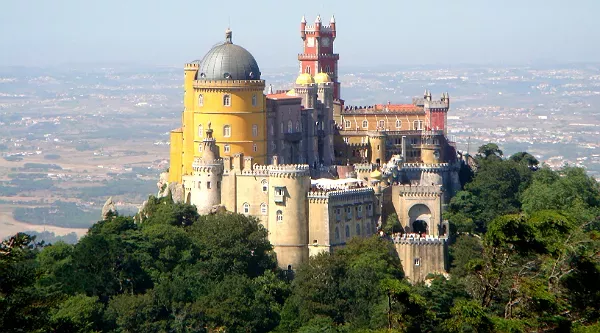
You can move around Lisbon and its surroundings by public transport or by train. If you prefer private transportation, on this web you can book a 7- or 9-seater car with a local driver.
Fado, a traditional Portuguese music genre, can be heard mainly in Lisbon and the student city of Coimbra. The word "fado" in translation means "fate" or "destiny", and this word is also the main motif of fado songs. Fado songs often tell about loneliness, unhappy love, hard life, which is connected with the tradition of sailors whose wives waited for them for many years... Among the most famous fado singers is Amália Rodrigues. In 2011, fado was declared an intangible heritage of humanity by UNESCO.
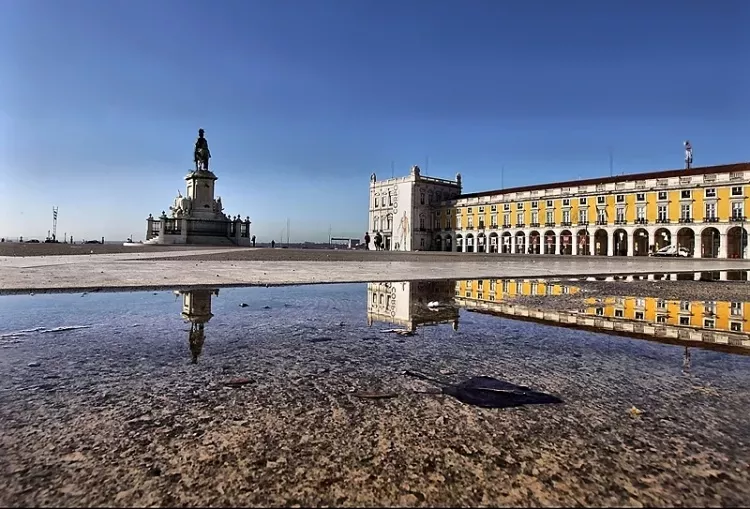
👍 Our tip: Mercado de Campo de Ourique - a stylish market where mainly locals go for Portuguese specialties. You will experience the local atmosphere here, there is seating and stalls with gourmet food. The market can be found at Rua Coelho da Rocha 104.
Weather in Lisbon
The weather in Lisbon is strongly influenced by the ocean - it moderates both winters and summers. It rains the least here in the summer and the most in the winter (the rainiest months are November and December). You can enjoy the warmest weather here from July to September, when temperatures reach 30°C. The summer heat moderates the sea breeze, clear skies prevail from spring to autumn.
You can also swim in Lisbon, but you have to take into account that the Atlantic Ocean is significantly colder than, for example, the Mediterranean Sea.
Celebrities
Vasco da Gama (1469 – 1524) - Portuguese navigator and explorer who discovered a sea route from Europe to India in 1497.
Dom Henrique o Navegador (1394 - 1460) - Portuguese pioneer in navigation and geography who led Portuguese expansion into Africa and Asia.
Ferdinand Magellan (1480 – 1521) - Portuguese navigator who led the first complete voyage around the world in 1519.
Luís de Camões (1524 - 1580) - Portuguese poet who is known for his epic poem "Os Lusíadas", which describes Portuguese discoveries and expansion.
Manuel I (1469 - 1521) - King of Portugal who supported Portuguese discoveries and expanded the Portuguese empire.
Amália Rodrigues (1920 – 1999) - Portuguese fado singer who became an icon of Portuguese music.
Fernando Pessoa (1888 – 1935) - Portuguese writer, poet and philosopher, who is considered one of the most important Portuguese writers.
José Saramago (1922 - 2010) - Portuguese writer who won the Nobel Prize for Literature in 1998.
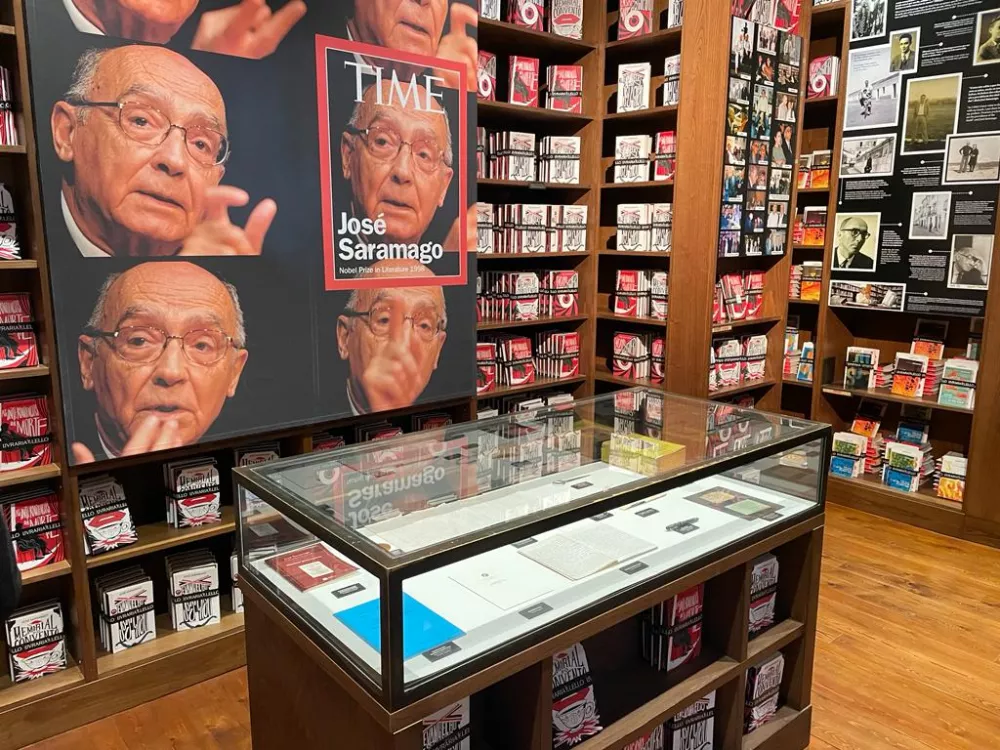
Eusébio da Silva Ferreira (1942 – 2014) - a famous Portuguese footballer who is considered one of the best footballers in the history of Portugal.
Luís Figo (1972) - famous Portuguese footballer who played for many European teams and won many awards and titles.
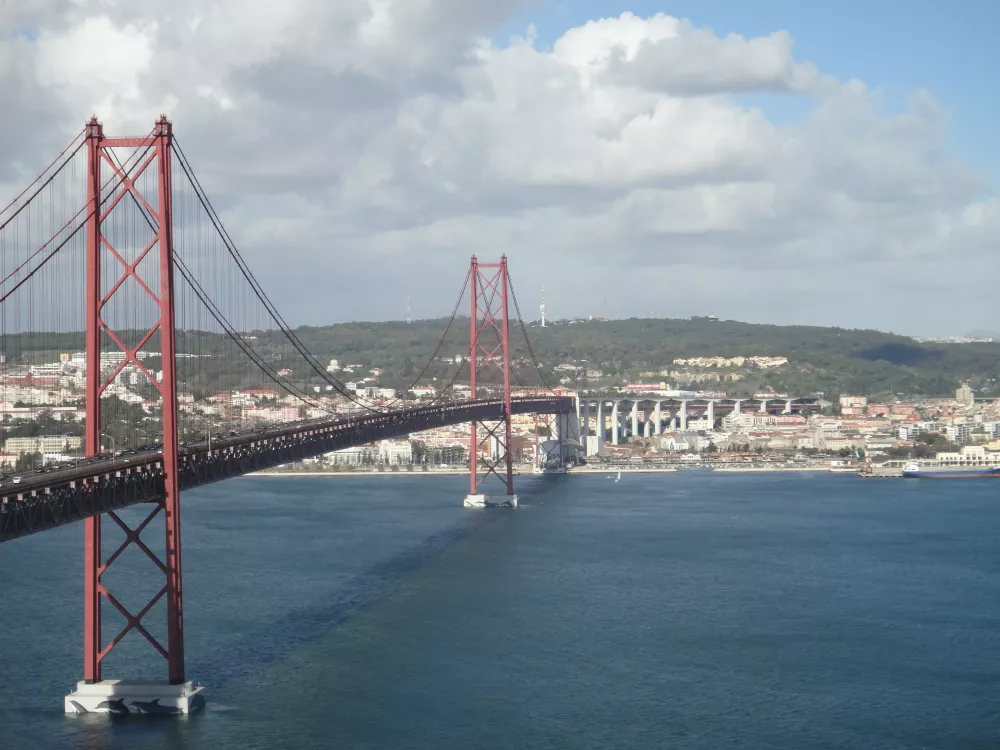
For a complete offer of accommodation in Lisbon, we recommend using A-HOTEL.com or Booking.com.